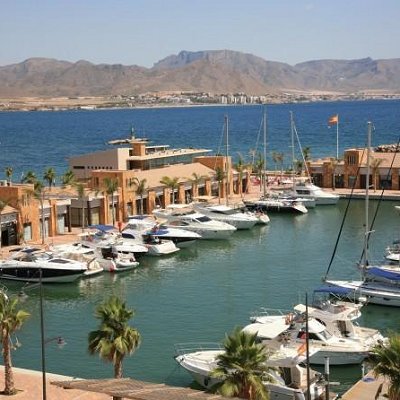
Like us on Facebook
PLACE NAMES




|
|
Puerto de Mazarron
|

|
|
Main sights of the area include:
- Cabezo del Plomo Site: This is an archaeological site group and it is placed in a long-shaped mound. The origins of these remains are dated in the late Neolithic and in the Chalcolithic. On the top of the mound, a rampart and some circle shaped huts have been preserved. On the bottom of this rise, there are remains of a burial site with a tholos distribution.
- Punta de los Gavilanes Site: The promontory Punta de los Gavilanes was occupied from Prehistoric times to Roman times. The main presence in Punta de los Gavilanes occurred during the first centuries in the 2nd millennium BC. Argaric people were who stayed at this place in the first era. Some centuries after there was Phoenician presence in this peninsular islet and they used it as a trade settlement.
- Phoenician Vessel Interpretation Centre: In the vicinity of a beach named Playa de la Isla the two most ancient Phoenician vessels in the Mediterranean Sea were found. One of these boats has received the name Mazarrón I and the only elements which have been kept are its keel, some timbers and some strakes. There is another boat whose name is Mazarrón II and it is almost entire.
- Alamillo Villa: This archaeologic site group consists of an establishment, a water pond, remains of an aqueduct and remains of a villa. On one hand, there a part of this archaeological material is dated in the 2nd - 1st centuries BD (the establishment) and on the other hand there is material of the Roman Empire period (the villa, the pond, and the aqueduct).
- Roman miliarium: A miliarium is a medium-heighted and oval or parallelepiped shaped column that was placed in the edge of the Roman roads for signalling every one thousand of passus (Roman measurement unit). This one is placed in the town Puerto de Mazarrón.
- De la Calle Era Roman Domus: This former house has been dated in the 4th and 5th centuries AD. It was a single-family dwelling whose surface was 300 m2. It had a central courtyard and triclinium.
- Roman Salting Factory: This structure was probably made and used in the 4th and 5th centuries AD.
- Vélez Castle: This fortress is located in the town centre of Mazarrón on a hillock.
- Molinete Tower: This structure also has the name Reyes Católicos Tower (Torre de los Reyes Católicos). This is a circle-shaped lookout fortified tower which is placed on a hummock close Vélez Castle. It was built in the year 1490.
- Santa Isabel Tower: This building was built in the 16th century. On one hand a reason for its settlement were the insecurity in this territory owing to Berber pirate entrances and attacks. On the other hand, this tower also enabled and facilitated fishing and agriculture activities. This tower is located on a hummock in Puerto de Mazarrón. It is circle shaped in its bottom part and its body is slightly truncated circular.
- San Andrés Church: This edifice was built from 1523 to 1549, but it was remodeled in the 18th century. Its architectural style is baroc, but this church has mudéjar frames.
- San Antonio de Padua Church: This church is located in the foot of the hummock where Vélez Castle is built. The building was ordered to be built by the Vélez marquis (MarquÉs de los Vélez) and it was finished in last 50 years of the 16th century.
- De la Purísima Monastery-Church: It was built in the 18th century and is built in the place of a former kind of shrink typical in Spain known as ermita. The origin of its dedication consists in a religious miraculous legend named El Milagro de la Purísima de Bolnuevo.
- Ancient Alum Factory
- Mining properties of Mazarrón
- Del Arco Aqueduct: Its building date is unknown, but this aqueduct is supposed to be constructed in the 18th or 19th centuries.
- Ateneo Cultural: Any document about the date of its construction has not been found, but it is known that it had been already built in the year 1844.
- Towncouncil ancient building: This edifice was constructed in the last decade of the 19th century and has a modernist architectural style.
- Water supply entrance in Las Salinas: This architectural structure is related to the salting activities. This building was constructed in the 20th century.
- Sagrado Corazón de Jesús Sculpture: The creation of this statue was ended in the year 1924 and this sculpture was opened on May. It was crumbled during the Spanish Civil War (1936 - 1939) and restored in 1952.
 Feel free to Email me any additions or corrections Feel free to Email me any additions or corrections
LINKS AVAILABLE TO YOUR SITE
| | |





